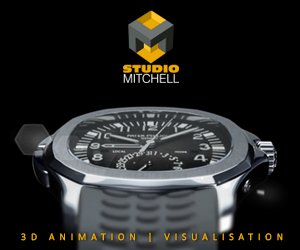Broadcast News
07/01/2013
Audio Metadata Processing – The Holy Grail Of Home Audio Entertainment

Today, the home entertainment television experience has been transformed. Many homes possess a large-screen high definition (HD) television and this immersive entertainment experience is significantly heightened by good multi-channel sound.
Whether it is sports, action adventure or drama, the impact of a TV programme is significantly influenced by the sophistication of the 5.1 surround sound that accompanies the broadcast. From the evolution of audio noise reduction to encoding, processing, digital cinema and live sound, Dolby Labs have been at the forefront in advances in audio technology over the last 45 years.
As impressive an audio transmission system as Dolby Digital is, there still exists a challenge in the diversity of listening devices that exist in the home ranging from a full-blown 5.1 surround amplifier with five full range speakers and a sub woofer all the way through to a single TV set with a mono speaker. All of these devices will receive the same broadcast signal and the challenge is for them to process that data in the most efficient way to provide the listener with the best audio experience.
Dolby is an elegant and sophisticated audio transmission system and the answer to the playback challenge lies in the metadata that is always transmitted within Dolby Digital plus broadcasts (both surround and stereo). At Axon, we have been working with Dolby in developing technical solutions that will provide transparent metadata handling within a Dolby audio stream which results in lowest operational cost with limited human intervention or dependency on automation within a broadcaster’s operations.
Why all the fuss about the audio?
You might think that there is relatively little variation in broadcast audio at different stages in a broadcast, but if you did you would be wrong. Depending on the type of programme being broadcast – from movies, to sports and general entertainment broadcasts, there is a very different set of audio parameters that broadcasters require.
The diagram below shows the parameters that one of Europe’s premier satellite broadcasters has defined and uses in broadcasts to more than 10 million subscribers.
These are parameters that are defined by this individual broadcaster, however there are other parameters that have been established by regulators and even by national governments. In 2010, the US government passed the Commercial Advertisement Loudness Mitigation (CALM) Act which makes it illegal for commercials to be excessively loud compared to the rest of the programming on a given channel.
Similarly, the European Broadcast Union’s EBU P/Loud Group has made recommendations. Encapsulated within directive R128, these recommendations cover a loud metering specification, loudness descriptor, loudness test material , practical guidelines and distribution guidelines.
Working together, Axon and Dolby believe that all of these requirements for specifications for different audio playback systems can be supported by intelligent metadata processing within the Dolby Digital plus broadcast stream.
The challenge is straightforward – all these different listening options need to be addressed in the most optimal way by generating compatible signals within the metadata for the equipment used. Due to differences in surround sound mixes and the way that six channels interact with each other, we need to apply different instruction sets in order to generate the correct signals for each of the chosen outputs.
The best person to apply these different parameters is the audio/balance engineer that is responsible for the final audio mix. Only he/she can best determine how a surround sound mix needs to be modified when listened to in stereo. Physically, this person sits at the start of the production chain and will benefit from transporting this data along with the video.
Since this metadata has a direct impact on what the listener at home perceives, this data is vitally important to the whole broadcast. This is why a transparent method from source to transmission is preferred.
As time goes by, more and more audio data will be listened to in a surround sound format, more programmes will be produced in surround sound and appropriate metadata parameters will be inserted within the production process. If eventually all audio is produced and stored in this way the infrastructure, with transparent metadata transport, will have very few requirements for human intervention in order to produce optimal listening conditions at home, and hence reproduce the intended listening experience. As there will always be legacy audio in the broadcast system that has no metadata attached, this audio will require some form of recognition: the absence of metadata is a strong signal that it is most likely stereo and probably too loud.
www.axon.tv
Whether it is sports, action adventure or drama, the impact of a TV programme is significantly influenced by the sophistication of the 5.1 surround sound that accompanies the broadcast. From the evolution of audio noise reduction to encoding, processing, digital cinema and live sound, Dolby Labs have been at the forefront in advances in audio technology over the last 45 years.
As impressive an audio transmission system as Dolby Digital is, there still exists a challenge in the diversity of listening devices that exist in the home ranging from a full-blown 5.1 surround amplifier with five full range speakers and a sub woofer all the way through to a single TV set with a mono speaker. All of these devices will receive the same broadcast signal and the challenge is for them to process that data in the most efficient way to provide the listener with the best audio experience.
Dolby is an elegant and sophisticated audio transmission system and the answer to the playback challenge lies in the metadata that is always transmitted within Dolby Digital plus broadcasts (both surround and stereo). At Axon, we have been working with Dolby in developing technical solutions that will provide transparent metadata handling within a Dolby audio stream which results in lowest operational cost with limited human intervention or dependency on automation within a broadcaster’s operations.
Why all the fuss about the audio?
You might think that there is relatively little variation in broadcast audio at different stages in a broadcast, but if you did you would be wrong. Depending on the type of programme being broadcast – from movies, to sports and general entertainment broadcasts, there is a very different set of audio parameters that broadcasters require.
The diagram below shows the parameters that one of Europe’s premier satellite broadcasters has defined and uses in broadcasts to more than 10 million subscribers.
These are parameters that are defined by this individual broadcaster, however there are other parameters that have been established by regulators and even by national governments. In 2010, the US government passed the Commercial Advertisement Loudness Mitigation (CALM) Act which makes it illegal for commercials to be excessively loud compared to the rest of the programming on a given channel.
Similarly, the European Broadcast Union’s EBU P/Loud Group has made recommendations. Encapsulated within directive R128, these recommendations cover a loud metering specification, loudness descriptor, loudness test material , practical guidelines and distribution guidelines.
Working together, Axon and Dolby believe that all of these requirements for specifications for different audio playback systems can be supported by intelligent metadata processing within the Dolby Digital plus broadcast stream.
The challenge is straightforward – all these different listening options need to be addressed in the most optimal way by generating compatible signals within the metadata for the equipment used. Due to differences in surround sound mixes and the way that six channels interact with each other, we need to apply different instruction sets in order to generate the correct signals for each of the chosen outputs.
The best person to apply these different parameters is the audio/balance engineer that is responsible for the final audio mix. Only he/she can best determine how a surround sound mix needs to be modified when listened to in stereo. Physically, this person sits at the start of the production chain and will benefit from transporting this data along with the video.
Since this metadata has a direct impact on what the listener at home perceives, this data is vitally important to the whole broadcast. This is why a transparent method from source to transmission is preferred.
As time goes by, more and more audio data will be listened to in a surround sound format, more programmes will be produced in surround sound and appropriate metadata parameters will be inserted within the production process. If eventually all audio is produced and stored in this way the infrastructure, with transparent metadata transport, will have very few requirements for human intervention in order to produce optimal listening conditions at home, and hence reproduce the intended listening experience. As there will always be legacy audio in the broadcast system that has no metadata attached, this audio will require some form of recognition: the absence of metadata is a strong signal that it is most likely stereo and probably too loud.
www.axon.tv
Top Related Stories
Click here for the latest broadcast news stories.
11/11/2016
What Is The Future For Immersive Audio?
Peter Poers, Managing Director at Jünger Audio, looks at production efforts versus consumer experience. Introduction Along with the evolution of highe
What Is The Future For Immersive Audio?
Peter Poers, Managing Director at Jünger Audio, looks at production efforts versus consumer experience. Introduction Along with the evolution of highe
14/05/2012
Jünger Audio Makes Audio Loudness Its Focus At Broadcast Asia 2012
Dynamics specialist Jünger Audio will focus on controlling audio loudness in the broadcast chain at this year’s Broadcast Asia convention in Singapore
Jünger Audio Makes Audio Loudness Its Focus At Broadcast Asia 2012
Dynamics specialist Jünger Audio will focus on controlling audio loudness in the broadcast chain at this year’s Broadcast Asia convention in Singapore
08/06/2011
Jünger Audio Introduces New High Performance Audio Processing Products At Broadcast Asia 2011
Dynamics processing specialist Jünger Audio will be showing a number of new projects at Broadcast Asia 2011 (Stand: 4U3-01), including the award-winni
Jünger Audio Introduces New High Performance Audio Processing Products At Broadcast Asia 2011
Dynamics processing specialist Jünger Audio will be showing a number of new projects at Broadcast Asia 2011 (Stand: 4U3-01), including the award-winni
11/05/2012
HHB Brings Broadcast Audio Expertise To Broadcast Asia 2012
HHB Communications will highlight its diverse range of professional audio products and services for broadcast sound at the Broadcast Asia 2012 show on
HHB Brings Broadcast Audio Expertise To Broadcast Asia 2012
HHB Communications will highlight its diverse range of professional audio products and services for broadcast sound at the Broadcast Asia 2012 show on
24/03/2009
New Dolby Multistream Decoder Bridges HE AAC And Dolby Digital Plus Standards
Dolby Laboratories has announced that they new Dolby Multistream Decoder, a licensable multiformat audio decoding technology that supports Dolby Digit
New Dolby Multistream Decoder Bridges HE AAC And Dolby Digital Plus Standards
Dolby Laboratories has announced that they new Dolby Multistream Decoder, a licensable multiformat audio decoding technology that supports Dolby Digit
10/10/2007
DK-Technologies Supplies Surround Sound Audio Meters To BBC Outside Broadcast
Audio and video metering specialist DK-Technologies has supplied two MSD600M++ surround sound audio meters to BBC Outside Broadcasts, part of BBC Reso
DK-Technologies Supplies Surround Sound Audio Meters To BBC Outside Broadcast
Audio and video metering specialist DK-Technologies has supplied two MSD600M++ surround sound audio meters to BBC Outside Broadcasts, part of BBC Reso
23/05/2006
DTS announces DTS-HD Master Audio Suite and DTS Surround Audio Suite
DTS has announced the introduction of DTS-HD Master Audio Suite and the DTS Surround Audio Suite, two new software suites to prepare audio streams for
DTS announces DTS-HD Master Audio Suite and DTS Surround Audio Suite
DTS has announced the introduction of DTS-HD Master Audio Suite and the DTS Surround Audio Suite, two new software suites to prepare audio streams for
09/08/2012
Blackmagic Design Announces Major New Software Update
Blackmagic Design has announced a major new software update that adds full-audio mixing capability to its ATEM 1 M/E Production Switcher and ATEM Tele
Blackmagic Design Announces Major New Software Update
Blackmagic Design has announced a major new software update that adds full-audio mixing capability to its ATEM 1 M/E Production Switcher and ATEM Tele
18/04/2007
OmniTek Shows Dolby E Metadata Solution At NAB
OmniTek has launched its new Dolby E monitoring and metadata decoding package, which was demonstrated for the first time at NAB on booth SL 9705. The
OmniTek Shows Dolby E Metadata Solution At NAB
OmniTek has launched its new Dolby E monitoring and metadata decoding package, which was demonstrated for the first time at NAB on booth SL 9705. The
17/01/2025
Audio-Technica Expands Its UK Commercial Audio Sales Team
Audio-Technica has recently expanded its UK Commercial Audio sales team with two new appointments, Craig Higgins and Sonny Sloggett, reflecting the co
Audio-Technica Expands Its UK Commercial Audio Sales Team
Audio-Technica has recently expanded its UK Commercial Audio sales team with two new appointments, Craig Higgins and Sonny Sloggett, reflecting the co
18/11/2024
W E Audio Invests In Martin Audio WPL
Long-term Martin Audio rental partner, W E Audio, recently underlined its commitment to the British manufacturer, by making a massive investment acros
W E Audio Invests In Martin Audio WPL
Long-term Martin Audio rental partner, W E Audio, recently underlined its commitment to the British manufacturer, by making a massive investment acros
20/02/2024
NADiV Audio Introduces Range Of Dante Audio And Control Devices
NADiV Audio has launched its NADiV range of Dante-enabled audio interface and control devices for portable and installed AV and pro audio environments
NADiV Audio Introduces Range Of Dante Audio And Control Devices
NADiV Audio has launched its NADiV range of Dante-enabled audio interface and control devices for portable and installed AV and pro audio environments
28/07/2023
DHD audio Unveils XS3 Core Audio Processor
DHD audio has announced a new addition to its modular range of audio studio equipment and systems. The XS3 core audio processor supports up to 20 ster
DHD audio Unveils XS3 Core Audio Processor
DHD audio has announced a new addition to its modular range of audio studio equipment and systems. The XS3 core audio processor supports up to 20 ster
17/07/2023
ES-Pro Audio Appointed To Handle Prism Sound's Range Of Audio Converters
Prism Sound has appointed ES-Pro Audio to handle its entire range of audio converters to the professional market in Germany. Formerly a Prism Sound re
ES-Pro Audio Appointed To Handle Prism Sound's Range Of Audio Converters
Prism Sound has appointed ES-Pro Audio to handle its entire range of audio converters to the professional market in Germany. Formerly a Prism Sound re
22/05/2023
Synthax Audio Appointed Distributor For TIERRA Audio
Synthax Audio UK has been appointed UK and Ireland distributor for TIERRA Audio's range of professional audio products. Founded in 2018 in Madrid, Spa
Synthax Audio Appointed Distributor For TIERRA Audio
Synthax Audio UK has been appointed UK and Ireland distributor for TIERRA Audio's range of professional audio products. Founded in 2018 in Madrid, Spa















